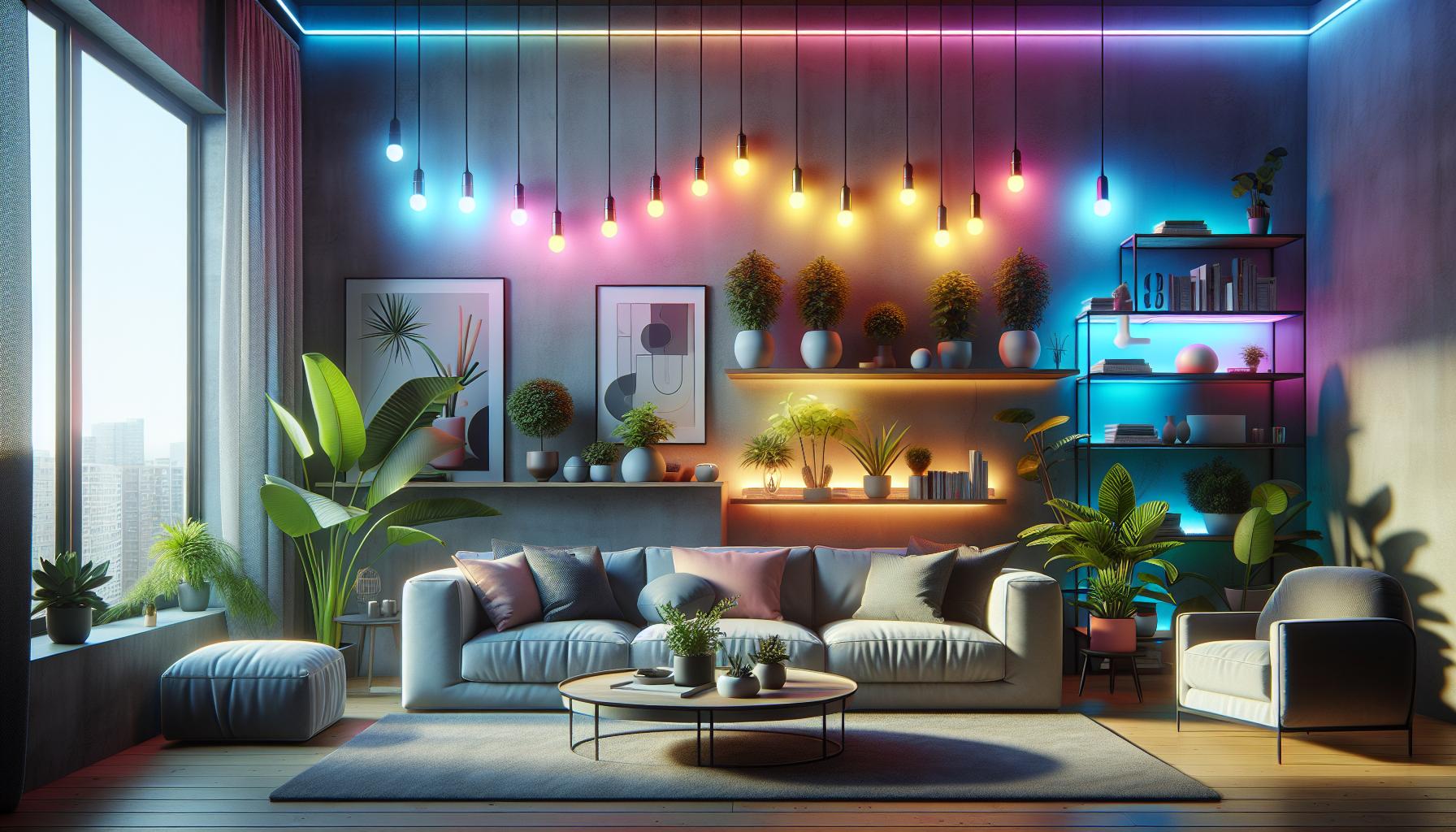Imagine life without the humble light bulb. You’d be relying on candles or gas lamps, struggling to read, work, or even cook once the sun sets. The light bulb isn’t just a fixture in your home; it’s a symbol of human innovation that fundamentally changed how you live, work, and play.
The invention of the light bulb sparked an era of productivity, allowing you to stretch your day well beyond the natural light. It’s crucial not just for convenience but also for safety, transforming night into a time where life doesn’t have to pause.
History of the Light Bulb
Imagine life before the warm glow of a light bulb filled your room. It’s hard, right? That’s because the light bulb has been an integral part of human progress. Your adventure into evening DIY projects wouldn’t be possible without the brilliance of this invention.
In 1800, Sir Humphry Davy introduced the first electric light. He experimented with electricity and discovered that a piece of carbon glowed when an electric current ran through it. Davy’s invention was known as the Electric Arc Lamp; although not practical for everyday use, it sparked a revolution—no pun intended.
Then came the illustrious Thomas Edison in 1879, often credited with the creation of the first commercially practical incandescent light. Yet, it’s lesser-known that Edison’s work built upon that of previous inventors—people like Joseph Swan and Hiram Maxim. Swan, for instance, had already been developing a longer-lasting bulb using a carbonized filament. Edison’s real contribution was improving the life span and practicality of the bulb which made it suitable for widespread home use.
- Early bulbs utilized carbon filaments.
- Edison’s bulb lasted up to 1200 hours.
Through the 20th century, the light bulb evolved:
- Tungsten filaments replaced carbon as they could withstand higher temperatures.
- Frosted bulbs emerged, spreading a softer light ideal for that cozy ambiance you love.
- Coiled coil filaments increased efficiency and lifespan.
Later advances led to the creation of compact fluorescent lamps (CFLs) and light-emitting diodes (LEDs). LEDs, in particular, have changed the game; they’re energy-efficient, long-lasting, and offer a range of light colors suitable for any mood.
| Year | Event |
|---|---|
| 1800 | First electric light (Electric Arc Lamp) |
| 1879 | Edison’s practical incandescent light bulb |
| 1900s | Tungsten filaments and frosted bulbs |
| 2000s | Adoption of CFLs and LEDs |
Your modern light bulb is a marvel of continued innovation and technological finesse. Without these advancements, you wouldn’t have the luxury of flipping a switch to shed light on your latest home project.
The Impact of the Light Bulb on Daily Life
Ever since the light bulb’s evolution from its humble beginnings, its impact on your daily life has been nothing short of transformative. Imagine going back to a time when the sunset dictated the end of your day’s activities. That’s no longer the case, thanks to the humble light bulb.
Lighting has extended the day for you and billions of others, allowing activities well into the night. You’re able to work later, play longer, and stay safer because illuminated streets and buildings are less conducive to crime. From the convenience of a simple switch, numerous possibilities unfold in homes, businesses, and public spaces, essentially setting the stage for a 24/7 active society.
More than just convenience, the light bulb has facilitated immense social and economic growth. Factories and offices now operate across multiple shifts, increasing productivity and job opportunities. Advances in lighting have also put you in control of ambiance and comfort—dimmer switches and color-changing LEDs contribute not just to aesthetics but also to your overall well-being.
With a keen interest in home DIY projects, you might enjoy the versatility that modern lighting offers. It allows for personalization in every room, whether it’s setting up perfect task lighting in the kitchen or creating a cozy atmosphere in the living room. Your ability to cater the lighting environment to specific tasks or moods enhances both functionality and creativity.
Furthermore, with the advent of energy-efficient bulbs like CFLs and LEDs, sustainability is now part of your lighting choices. You’re not only saving on electricity bills but also participating in the global effort to reduce carbon emissions. Energy-saving bulbs have significantly lower environmental impacts than their incandescent predecessors, reinforcing the role of the light bulb in fostering a greener future.
The Importance of Light Bulb for Productivity
« Do Light Bulbs Explode? How to Prevent Unexpected Shatters at Home
Do LED Light Bulbs Use Less Electricity? Uncover Energy Savings »
When you think about productivity, lighting might not be the first thing that comes to mind, but it plays a pivotal role. Proper lighting can significantly affect how efficiently and effectively you work, whether it be in a home office or a large industrial factory. The light bulb, a seemingly simple device, can be a crucial tool in enhancing focus and output.
For years, studies have shown that having adequate lighting in the workplace can lead to fewer errors, faster work, and more positive moods among employees. Dim or harsh lighting, on the other hand, tends to result in increased fatigue, eye strain, and a general drop in work quality. This is where lumens and color temperatures come into play. While lumens measure the brightness of a bulb, color temperature affects the feel of the space. For instance, a cooler, blue-light tone might invigorate your space and is ideal for brainstorming and high-concentration tasks.
But let’s dive deeper from the perspective of a light bulb enthusiast with a knack for DIY projects:
- Brightness Levels: Adjust the brightness to suit the task at hand. For precision work or reading, high-lumen bulbs ensure clarity.
- Color Rendering Index (CRI): A higher CRI means colors appear truer to life, which is essential for tasks like graphic design or painting.
- Task Lighting: Sometimes, overhead lights aren’t enough. Adding task lighting like desk lamps can provide targeted illumination that enhances productivity.
Consider the last time you worked on a DIY project—a well-lit workspace undoubtedly made the experience more enjoyable and efficient. That’s the power of the right light bulb, transforming spaces and influencing how well you perform tasks.
In commercial settings, such as factories, the correlation between lighting and productivity takes on even greater significance. Sufficient, quality lighting is not just a recommendation; it’s a safety requirement. Properly illuminated work areas prevent accidents and ensure operational flow. Thus, light bulbs are indispensable for both personal and commercial productivity, illuminating the path to success in more ways than one.
Light Bulb and Safety
Light bulbs are often overlooked as a safety feature, but they’re critical in preventing accidents and ensuring a secure environment. Proper illumination is essential for recognizing potential hazards, whether you’re navigating a flight of stairs or operating heavy machinery. Inadequate lighting could lead to mishaps, highlighting the value of the humble light bulb in safeguarding your well-being.
Accident prevention is just the tip of the iceberg. Well-lit spaces deter criminal activity, offering both safety and peace of mind. That’s why security experts recommend robust lighting around the home, from floodlights in your backyard to motion-sensor bulbs in the driveway. A reliable floodlight can be a DIY enthusiast’s best friend, providing a deterrent to potential intruders while illuminating your evening projects.
Industrial settings rely heavily on lighting for safety. Imagine a warehouse without enough light where workers are handling forklifts and heavy boxes. It’s a recipe for disaster. Adequate lighting in these environments is regulated and strictly enforced for the protection of workers. ANSI/NEMA FL1 standards, for instance, govern the performance and design of lighting to ensure everyone’s safety.
Safety extends to emergency situations as well. Emergency lighting and exit signs are vital during power outages or disasters, guiding you to safety. These systems usually have backup power sources and are designed to kick in automatically, but regular checks are crucial to ensure they function when you need them most.
Whether it’s LED bulbs that last longer and reduce the need for precarious ladder climbs to change them, or the carefully selected lumens and color temperature for optimal visibility, lighting paves the way for a safer world. Remember, the right light bulb is not just brightening your space—it’s quietly keeping you safe one lumens at a time.
Conclusion
You’ve seen how light bulbs are more than just a convenience—they’re a necessity for a productive and safe environment. Whether you’re working late into the night at your home office or navigating a busy factory floor, the right lighting can make all the difference. It’s not just about being able to see what you’re doing; it’s about creating spaces where you can thrive and stay safe. So next time you flip that switch and your room is bathed in light, remember that you’re tapping into one of the most significant inventions of all time, one that continues to shape a brighter, safer world for us all.
Frequently Asked Questions
What impact does the light bulb have on daily life?
Light bulbs significantly enhance daily life by improving productivity and safety. They enable focus and higher work output in settings like home offices and factories.
How does proper lighting affect productivity?
Proper lighting, with attention to lumens and color temperature, boosts concentration and task performance, which directly impacts productivity.
What is the importance of task lighting?
Task lighting provides directed light to specific areas, enhancing visibility for detailed tasks and further contributing to a productive work environment.
Why is lighting crucial for safety in commercial settings?
Adequate lighting prevents accidents, deters criminal activities, and ensures a safe environment in emergency situations, making it vital for commercial safety.
What role do regulations play in industrial lighting?
Regulations ensure that industrial settings maintain proper lighting levels to safeguard worker safety and prevent workplace accidents.
How do LED bulbs contribute to creating a safer world?
LED bulbs offer bright, efficient lighting that improves visibility and safety, while being energy-saving and long-lasting, thus contributing to a safer environment.




